Hetch Hetchy—Natural History Before the Dam
by Joe Medeiros
Sierra College Press, Editor-in Chief
Yosemite is spectacular and special—perhaps no more and no less than the rest of this magnificent mountain range. But there was something very special about Hetch Hetchy for the famous conservationist, John Muir. Long before the threat of damming this middle-elevation Sierra valley ever emerged, Muir had explored Hetch Hetchy and waxed eloquently about its beauty and amazing similarity to its “twin” to the south, Yosemite Valley. In the autumn of 1871, John Muir visited Hetch Hetchy for the first time. He wrote,
“…I have always called it the Tuolumne Yosemite, for it is a wonderfully exact counterpart of the great Yosemite, not only in its crystal river and sublime rocks and waterfalls, but in the gardens, groves, and meadows of its flowery park-like floor…the walls of both are of gray granite, rise abruptly out of the flowery grass and groves are sculptured in the same style, and in both every rock is a glacial monument.”
Much later, in the throes of the contest between San Francisco’s interest in damming Hetch Hetchy and the preservationists’ pleas to keep the new national park unspoiled, he wrote (from his book The Yosemite, 1912),
“Yosemite is so wonderful that we are apt to regard it as an exceptional creation, the only valley of its kind in the world; but Nature is not so poor as to have only one of anything. Several other Yosemites have been discovered in the Sierra that occupy the same relative positions on the Range and were formed by the same forces in the same kind of granite. One of these, the Hetch Hetchy Valley, is in the Yosemite National Park about twenty miles from Yosemite…”
Hetch Hetchy—A Monumental Ice Sculpture
Existing as another spectacular example of a monumental ice-sculpture, Hetch Hetchy exists just below 4000’ elevation in the northwest corner of Yosemite National Park. Pleistocene glaciation had carved this spectacular canyon westward from the Sierra crest, its icy thrust waning approximately where Hetch Hetchy valley now exists. After the Ice Age glaciers retreated, the freshly excavated gorge was utilized by the Tuolumne River, reclaiming its earlier, but much smaller original pathway from Tioga Pass, near the 13,000’ peaks now named Mts. Dana and Gibbs. From the high country the river then traveled quietly down from its alpine headwaters to 8600 feet where it fanned out into the resplendent subalpine wildflower garden known as Tuolumne Meadows.
From there it raced energetically down the Grand Canyon of the Tuolumne, roaring over cascades and booming over spectacular falls with names like the White Cascades, and California, LeConte and Waterwheel Falls. From Tuolumne Meadows the river traveled almost 20 miles and dropped nearly 5000 feet in elevation where is slowed, to meander peacefully through a wider spot in the glacially-carved canyon: Hetch Hetchy. For nearly eight more miles the river wandered through tall, grassy meadows, patches of pines and handsome clusters of oaks. Towering above the verdant meadow, stark and bold granite walls, too steep for pine forests to find purchase, grand cliffs arose from which waterfalls could leap from glacially carved hanging valleys.
Thousands of Years of Human Life in the Region
But long before John Muir ever set eyes upon Hetch Hetchy, perhaps as many as eight thousand years earlier, native peoples of various tribes and origins had located the broad and inviting valleys of what we now call Yosemite. While there may have been other bands of Paleo-Americans present before, recent studies suggest that as many as seven different distinct human groups utilized and competed for resources at locations like Yosemite and Hetch Hetchy Valleys around the European contact period. West-slope natives (Miwok and Yokuts) and east-slope peoples (Paiute and Mono) are said to have utilized (and claimed territorial rights to) Hetch Hetchy. Well-worn trails connected the two bioregional cultures as they traveled east-west and back again from their tribal lands to utilize and benefit from resources on both west- and east-facing slopes of their Sierran home.
The Hetch Hetchy location (lower, west-slope Sierra) provided for cooler habitation during summers and more moderate temperatures during cold winters. Plant foods (seeds, berries, leaves, bulbs and tubers) were plentiful. Year-around water was available for drinking, food preparation and other practical uses. While the Tuolumne River was probably without fish at that time, other game (birds, deer and other mammals) were available for food, clothing and ornamentation. Plentiful fibers (grasses, sedges, roots, etc.) were used for baskets and other useful items. Plant resources also found their way into tools and weapons. With little doubt, obsidian (absent on the west slope) was traded by east-slope tribes and became an important material resource (arrow points, scrapers, blades) for west-slope peoples. Unfortunately, the damming of the Tuolumne and the flooding of Hetch Hetchy Valley has drowned all evidence of village sites, tool-utilization, and records of early use by native peoples.
John Muir’s “Plant People” of Hetch Hetchy
Reconstructing an ecological overview of pre-reservoir Hetch Hetchy is not as difficult as trying to describe how it may have been utilized by its earliest inhabitants. Yosemite Valley, only about 17 miles away and at the same approximate elevation exists today as a vegetational and ecological equivalent. Additionally, as early photography was being employed in popularizing Yosemite, we have numerous pieces of evidence that enable us to reconstruct Hetch Hetchy’s pre-flooding vegetation. With a few exceptions, Hetch Hetchy’s natural history was probably very nearly a replica of that of Yosemite Valley.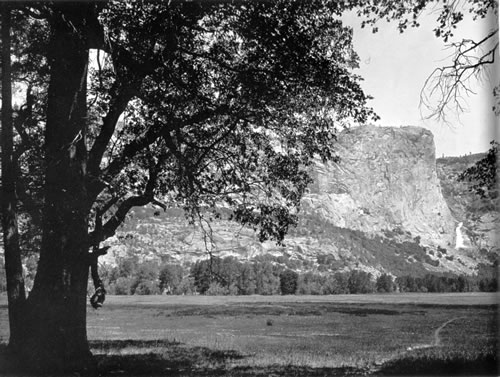
Photographs by Edward T. Parson, Joseph LeConte and numerous others illustrate large, open meadows, clusters of conifers, groups of mature oaks and riparian (streamside) forests. Terrestrial communities such as these were partly influenced by the proximity of water and soil moisture levels. Aquatic assemblages of wetlands (ponds, pools, side streams, etc.) as well as the river itself added to the biotic richness of the entire complex. Hetch Hetchy was then a complex but harmonious aggregation of terrestrial and aquatic habitats.
Muir described Hetch Hetchy’s dominant trees in his 1873 publication for the Boston Weekly Transcript,
“The surface of Hetch Hetchy is diversified with groves and meadows in the same manner as Yosemite, and the trees are identical in species. The dryer and warmer portions have fine groves of the black oak (Quercus sonomensis) with a few sugar pines (P. lambertiania). The Sabine pine (P. sabiniana) which grows on the north side of the valley in sun-beaten rocks, is not found in Yosemite. Upon the debris slopes, and in the small side cañons of the south wall, dwell the two silver firs (Picea amabilis and grandis). The white cedar (Libocedrus decurrens) and Douglas spruce (Abies douglasii) are noble trees and pretty generally distributed throughout the valley. Thickets of azalea and the brier rose … groves of alder and poplar and flowering dogwood … ferns and sedges and drooping willows ….”
Later (1908) he described the vegetation in a Sierra Club Bulletin:
The principal trees are the yellow and sugar pines, Sabine pine, incense cedar, Douglas spruce, silver fir, the California and gold-cup oaks, balm of Gilead poplar, Nuttall's flowering dogwood, alder, maple, laurel, tumion, etc. … The shrubs forming conspicuous flowery clumps and tangles are manzanita, azalea, spiraea, brier-rose, ceanothus, calycanthus, philadelphus, wild cherry, etc.; with abundance of showy and fragrant herbaceous plants growing about them or out In the open in beds by themselves—lilies, Mariposa tulips, brodiaeas, orchids—several species of each,—iris, spraguea, draperia, collomia, collinsia, castilleia, nemophila, larkspur, columbine, goldenrods, sunflowers, and mints of many species, honeysuckle, etc. etc. Many fine ferns dwell here also, especially the beautiful and interesting rock-ferns—pellaea, and cheilanthes of several species—fringing and rosetting dry rock-piles and ledges; woodwardia and asplenium on damp spots with fronds six or seven feet high; the delicate maidenhair in mossy nooks by the falls, and the sturdy, broad-shouldered pteris beneath the oaks and pines.
 Both of these elegant descriptions reveal his fondness for “the plant people” as he called them. While both scientific and vernacular names have been changed and adjusted for many of these species, his botanical recording of these Sierra plants enables us to know much of what was present then (see notes on name changes at the end of this article).
Both of these elegant descriptions reveal his fondness for “the plant people” as he called them. While both scientific and vernacular names have been changed and adjusted for many of these species, his botanical recording of these Sierra plants enables us to know much of what was present then (see notes on name changes at the end of this article).
Differing from Yosemite Valley, the gray pine (Pinus sabiniana) occurred in Hetch Hetchy. Known also as the foothill pine (Muir referred to it as the Sabine pine) this branching and forking low-elevation pine is rather unique among Sierra conifers. It thrives on hot western slopes and can tolerate very acidic soils (like serpentine) where no other pine can. Its heavily armed cones were no match for squirrels who probably taught early peoples the value of its large seeds as food. Lacking the conical shape of the typical pine this wispy, blue-gray-needled pine was sadly nick-named the digger pine. Its seeds were a major food source for the American Indians who were historically and rudely called “diggers” for their techniques in securing food from the earth (roots, bulbs, rhizomes). In spite of efforts to rid the common vernacular of this derogatory name, this pejorative moniker persists today.
The dominant conifers of the valley were ponderosa pine, incense-cedar and white fir. Where conditions were cooler and moister, Douglas-fir and sugar pine would have been a part of this coniferous mix. Predominant broadleaf trees that would have been found in the valley floor include black oak, Pacific dogwood and big-leaf maple. Not so common was the California nutmeg (Muir’s tumion). On the granitic slopes rising upwards from the valley, canyon live oak (gold cup) and the interior live oak as well as California laurel (bay) were found.
Such trees and forest clusters describe the mixed-conifer landscape of that part of Hetch Hetchy Valley that was wooded. Much of this hugged the margins of the meadow—closer to the granite flanks. Riparian vegetation of black cottonwood, white alder and willows clung to the banks of the meandering Tuolumne. These were tall trees that were tolerant of being flooded on an annual basis and thriving in very moist soils.
Meadows—Made by Nature and by Native Californians
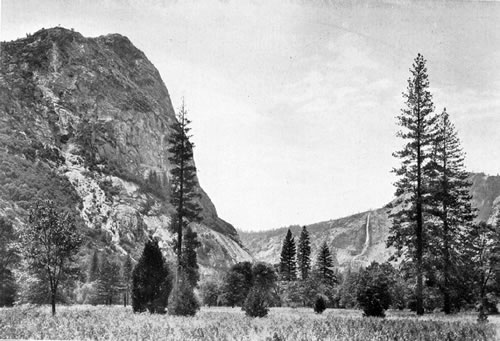 Where trees were excluded, broad and grassy meadows basked in the Sierra sunlight. As Muir so capably described, the meadow was rich with wildflowers and ferns. Shrubs typical of the lower- to mid-Sierra elevations were well represented—manzanita, azalea, spiraea, rose, buckbrush, spicebush, mock orange, various wild cherries and more.
Where trees were excluded, broad and grassy meadows basked in the Sierra sunlight. As Muir so capably described, the meadow was rich with wildflowers and ferns. Shrubs typical of the lower- to mid-Sierra elevations were well represented—manzanita, azalea, spiraea, rose, buckbrush, spicebush, mock orange, various wild cherries and more.
Photographs of the meadow illustrate its extensive and open character. Instead of being overrun by conifer and broadleaf tree species, the meadow, in many locations, remained virtually treeless. This suggests a variety of factors, but mostly two: flooding and fire. While trees clearly require large quantities of water (to aid in constructing fiber and growing to significant sizes) most species abhor soggy soils; the exceptions are those tolerant riparian species. Most years the Tuolumne ran strong and plentiful in the summer—diminishing later in the fall. But during spring snowmelt the river would rise over its banks and flood wide and away from its main course. This annual occurrence, causing saturated soil, can keep a meadow free of woody trees. There is a second influence, that of fire, that can keep meadows luxuriant while reducing or eliminating competitive trees and shrubs.
Well-documented now in the Sierra and other mountain ranges is the significance of fire, ignited either by lightning or by humans, in shaping the landscapes where it occurs. Testament to this is neighboring Yosemite Valley.
By the late 1800s native villages were all but removed from Yosemite Valley. Photographs after this time document the encroachment of pines, incense-cedar and white fir—expanding into the once-open Yosemite Valley meadows. We now know that removal of anthropogenic [initiated by humans] fire ignition—as well as the suppression of lightning-started fire—altered both the structure and composition of the forest—resulting in more trees, at the expense of the meadow vegetation. Meadows shrunk as forests expanded.
How extensively the native peoples influenced or affected the structure of the Hetch Hetchy meadows may never be exacted. But the facts remain that various tribes utilized this large and productive, well-protected place—perhaps for thousands of years—before Europeans first entered in the 1850s. We now assume that its structure (composition and distribution of major vegetation) must have been, at least in part, influenced by early human activity.
Indigenous peoples utilized fire as a major tool to influence the environments in which they lived for at least a portion of each year. Annual ignitions of forests and meadows provided a variety of benefits: clearer views that enabled a group to more easily spot marauding human competitors; the favoring of one plant species over another for use in tool or weapon construction; and the enhancement of oaks for increased production of prized acorns as food. In meadows and grasslands, fires are known to clear thatch, reduce interspecific competition and to stimulate spring growth and flowering. This resulted in preferential plant renewal and success, as well as increased seed production for food. Fires in meadows also favored biotic diversity of plant species which then acted to increase predation by a variety of animals. These, in turn, would be hunted for food.
Hetch Hetchy provided its earliest inhabitants with plentiful meat (especially deer and birds) and an abundance of plant foods. Roots, bulbs and tubers abounded and could be easily dug. Grass and wildflower seeds were certainly gathered. Large and nutritious gray pine seeds and acorns (especially from the preferred black oak) could be gathered and stored or some prepared and eaten immediately.
First Non-natives Enter Hetch Hetchy
Muir visited and described Hetch Hetchy first in 1872-73. Before his visit and subsequent publication it had been explored and described by others. In 1850, Joseph, Nate and William Screech entered Hetch Hetchy Valley, perhaps becoming the first European-Americans to claim that they’d seen this valley. The following year, the Mariposa Battalion would invade Yosemite Valley and roust its native inhabitants from their centuries-long home.
Joseph Screech and others purportedly blazed a trail that cut off from the “main Yosemite Trail” for the purposes of running sheep and cattle into Hetch Hetchy. Later, in 1868, Charles Hoffmann of the first California Geological Survey indicated that Screech had noted that there were Indians in the valley. Hoffmann referred to these people as Pah Utahs (Paiutes) and that they spoke of a great salty lake (Mono Lake). Hoffmann had interviewed the Screech brothers and other mountaineers who said that Paiutes were the first people of Hetch Hetchy. Hoffmann wrote that the Paiutes had several battles with the Big Creek Indians from the western foothills over Hetch Hetchy, but the Paiutes were victorious in retaining their ownership of Hetch Hetchy. Hoffmann’s written account was published in the October 1867 “Notes on Hetch-Hetchy Valley,” Proceedings of the California Academy of Sciences (San Francisco: CAS, 1868), series 1, 3:5, pp. 368-370.
Consequently, the Hetch Hetchy about which Muir spoke so eloquently, was far from pristine; it was influenced, probably significantly, by early peoples and later by explorations for gold, the herding of sheep and cattle, for hunting and possibly for other resource extraction. Yet, it remained, at least in Muir’s mind as “… this vast unhandselled Yosemite…” He also wrote, “At present there are a couple of shepherds' cabins and a group of Indian huts in the valley, which I believe is all that will come under the head of improvements.” Regardless, Muir still saw Hetch Hetchy as a sublime superlative in his beloved Sierra.
Animal Life in the Valley
Hetch Hetchy’s fauna, like that of neighboring Yosemite Valley, varied from very large to very small. No doubt both black and grizzly bear roamed in search of acorns and other plant resources (Muir mentioned tracks and other signs of bear activity in his writings). With plentiful mule deer as prey, cougar would have certainly made regular passes through the valley. The cougar’s smaller cousin the bobcat would have found ample smaller prey. Other smaller carnivores would have included members of the weasel family (fisher, American marten, river otter, badger, mink and long-tailed weasel) as well as their omnivorous near-relatives, the skunks (spotted and striped). The only marsupial to be found would be the opossum but other nocturnal visitors would include the raccoon and the ringtail. 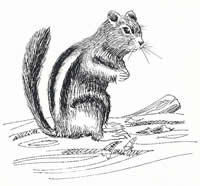 Squirrels would have included those that live in trees (northern flying squirrel, chickaree and western grey squirrel) and in the ground (golden-mantled and California ground squirrel) while chipmunks of various species abounded. Other rodents included muskrats, moles, pocket gophers, mice and voles. The meadow would have also been occupied by shrews, while bats of numerous species hawked insects from above.
Squirrels would have included those that live in trees (northern flying squirrel, chickaree and western grey squirrel) and in the ground (golden-mantled and California ground squirrel) while chipmunks of various species abounded. Other rodents included muskrats, moles, pocket gophers, mice and voles. The meadow would have also been occupied by shrews, while bats of numerous species hawked insects from above.
Amphibians enjoying the meadows and many aquatic ecosystems of the valley would have included the now-threatened foothill yellow-legged and California red-legged frogs, as well as populations of California toads. Pacific chorus frog (tree frog) would certainly have flourished along with salamanders, ensatina and newts.
Dozens of species of snakes and lizards would have filled many herpetological niches while western pond turtles found food and habitat in the waterways.
Regular bird inhabitants probably numbered more than one hundred species from the smallest hummingbirds to the largest vultures, hawks and eagles. Ducks, geese, herons, egrets and myriad waterfowl took advantage of the Tuolumne’s resources. Hawks, falcons and owls dined on rich mammal resources while plentiful insects were gleaned by wrens, warblers, kinglets, nuthatches, flycatchers, swallows, ouzels, bluebirds, woodpeckers and many other birds. Plants provided fare for scores of seed-eating birds like finches, grosbeaks, jays, waxwings and sparrows.
Hawks, falcons and owls dined on rich mammal resources while plentiful insects were gleaned by wrens, warblers, kinglets, nuthatches, flycatchers, swallows, ouzels, bluebirds, woodpeckers and many other birds. Plants provided fare for scores of seed-eating birds like finches, grosbeaks, jays, waxwings and sparrows.
Unlike Yosemite Valley, Hetch Hetchy was probably fishless until they were introduced by humans after European contact. Preston Falls, only a few miles downstream from the valley, and the steep canyon between it and the valley most likely excluded fish from Hetch Hetchy. The US Cavalry was known to move fish around and one of the first trout hatcheries in the region was on Frog Creek, now tributary to Eleanor Reservoir, fairly close to Hetch Hetchy. By 1912, Sierra Club correspondence mentioned trout in the upper Tuolumne Meadows. Even Muir, in his 1912 book, The Yosemite, referred to “…a surging trout-pool” on the main fork of the river above Wapama and Tueeulala Falls. But, before such fish introductions, the Tuolumne River was far from poor in aquatic animal life. Without fish, the river within Hetch Hetchy Valley was surely a haven for myriad aquatic insects (mayflies, stone flies, caddis flies, Dobson flies, hellgrammites, etc.). These “bugs” would have then served as nourishment for healthy populations of the once-common red-legged and yellow-legged frogs. Additionally, one of Muir’s favorite birds, the dipper or water ouzel, feasted on these crunchy, protein-rich morsels—gleaned below the surface, in fast-moving water.
The Drowning of Hetch Hetchy—and What Was Lost
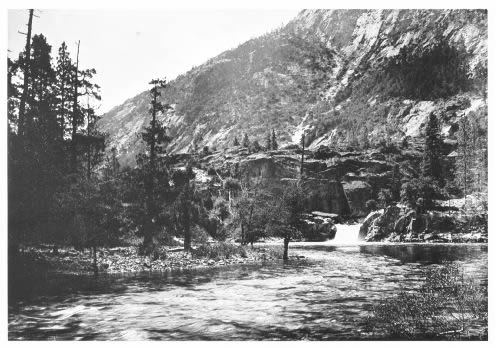 No wonder John Muir spoke so highly of Hetch Hetchy. While others had arrived there long before him and influenced numerous species, habitats and ecological processes, Hetch Hetchy still provided a grand and spectacular landscape—filled with visual pleasures like steep granite walls, roaring waterfalls, expansive meadows and robust trees. Such a landscape, reminiscent and duplicative of Yosemite Valley caused Muir to pause and absorb its charm and splendor. Take this and add luxuriant plants, an artist’s palette of wildflowers, teeming wildlife, and some refreshing spring breezes. No wonder the idea of damming and drowning Hetch Hetchy revolted John Muir and hundreds of others that saw it from the same perspective.
No wonder John Muir spoke so highly of Hetch Hetchy. While others had arrived there long before him and influenced numerous species, habitats and ecological processes, Hetch Hetchy still provided a grand and spectacular landscape—filled with visual pleasures like steep granite walls, roaring waterfalls, expansive meadows and robust trees. Such a landscape, reminiscent and duplicative of Yosemite Valley caused Muir to pause and absorb its charm and splendor. Take this and add luxuriant plants, an artist’s palette of wildflowers, teeming wildlife, and some refreshing spring breezes. No wonder the idea of damming and drowning Hetch Hetchy revolted John Muir and hundreds of others that saw it from the same perspective.
Thousands wrote letter protesting the violation of raw, natural beauty and the sanctity of the national park. Hundreds of editorials, from coast to coast, railed against the desecration. More than a decade of legal battles almost always resulted in the same decision—to deny San Francisco of its far-reaching water-grab. Then, on that fateful day in December of 1913, when the pro-dam planets were aligned and political gamesmanship favored San Francisco’s bid for the Tuolumne, all was lost.
Yosemite’s near-twin was shaved treeless. Its free-flowing Tuolumne was re-routed while dynamite blasted the foundations for a concrete dam. Hetch Hetchy was slowly drowned. Each and every individual organism within would die or be forced to flee—where they would either succeed in taking over another individual’s niche or die trying.
Perhaps this begs clarification. I mention that individual organisms that were displaced by the rising waters behind O’Shaughnessy Dam would perish or would displace others, elsewhere. To start, one must recognize that all ecosystems are “filled.” By this, we mean that habitats have as many individual organisms within them that can exist at any one time—if one assumes these tenets:
- All species over-reproduce (more are born than can actually survive)
- Populations are limited by resources (food, water, nutrients, sunlight, space, mates, etc.)
- Some (most) offspring must die due to these limitations
- Competition for said resources are the backbone of natural selection and organic evolution
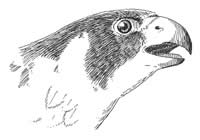 Given these parameters, there are as many individual organisms living within any given habitat, occupying any given niche, at any one time. “There is no room in the inn” so to speak, and there are no new rooms being built.
Given these parameters, there are as many individual organisms living within any given habitat, occupying any given niche, at any one time. “There is no room in the inn” so to speak, and there are no new rooms being built.
So, in this case, when floodwaters permanently drown a terrestrial ecosystem, any individual that is capable of fleeing will in fact do so. Others (those rooted in or too slow to react) will die immediately. Those that do flee will have to compete with others that are already occupying similar niches (ecological roles) in nearby habitats. Since those habitats are already full (based upon the above principles), there are only two alternatives: to out-compete another individual elsewhere, or die trying. The loser of this contest will have to do the same, but the bottom line is that there will be a net reduction in biomass and biodiversity resulting from this event. The same is true of any major disruption (reservoir, concrete, asphalt, housing tract, shopping mall or freeway) that obliterates the natural ecosystem that previously existed—not just for one time, but forever—affecting hundreds of thousands of future plant and animal people.
The flooding of Hetch Hetchy was more than a major loss of landscape beauty. It was a significant and ecologically traumatic event. While San Franciscans and their neighbors enjoyed crystal clear water and power from the High Sierra, the results of this intrusion affected millions of organisms who lived then and would continue to reproduce and flourish until now.
This loss did not just affect “nature”—it affected us. This loss, the result of clever vote-trading in Washington in 1913, permanently reduced the significant contributions of Hetch Hetchy to the Sierra, to the state and the nation within which it lay. Gone forever were the oxygen-producing and carbon-sequestering plant people. Gone forever was the fine-tuned and exquisitely-functioning ecosystem that contributed to the healthy Sierra that benefited humanity with invaluable and immeasurable materials, functions and services.
The result was tragic for Hetch Hetchy—a total landscape conversion, the loss of every individual organism that once thrived there, and the prohibition of any continuity of this once-thriving Sierran ecosystem.
A Century Later—Can We Restore the Valley that Muir Loved?
John Muir’s warnings of the human-engineered “water tank” became a reality—a victory for few and a horrific loss for many. Muir was devastated. He was 76 years old and his loving wife Louie was already gone. He had lost an important major battle and there would be no going back. Gone forever would be Yosemite’s twin. John Muir lived a bit more than another year and certainly died with the pain of this monumental loss in his heart.
So, would the decommissioning of O’Shaughnessy Dam and the draining of Hetch Hetchy Reservoir be anything more than just the restoration of a beautiful, classic painting? Absolutely yes! There are countless reasons for dismantling human contrivances that have interrupted or disabled natural ecosystem functions.
Just outside Olympic National Park in Washington State, the Elwha Dam is being disassembled and a major restoration project is being conducted. The cost will be significant, but not nearly the true cost of the losses that have occurred since it was built. Let the next similar restoration occur in Yosemite National Park! This is not just a frivolous attempt by environmentalists, it is a scientifically logical proposal that will benefit millions to come—by repairing the damages that been wrought by ill-planning, haste and ignorance of the real and measurable values of healthy, functioning ecosystems.
Authors note: The following represent current taxonomic understanding of some Sierra trees that John Muir mentioned in his articles on Hetch Hetchy.
- Quercus sonomensis = now Q. Kelloggii is the black oak/California black oak/Kellogg oak.
- Quercus crassipocula = now Q. chrysolepis is the gold-cup oak/canyon live-oak/maul oak
- Tumion = Torreya californica is the California nutmeg which is a rare conifer in the Sierra
- Balm of Gilead Poplar is the black cottonwood (P. trichocarpa) which is very closely related to P. balsamifera which is the balsam poplar from northern regions.
- Douglas spruce is the Douglas-fir (Pseudotsuga menziesii) which is not a true fir but another conifer entirely, more closely related to Asian conifers.
- Silver fir is the white fir (Abies concolor). Muir refers to two silver firs but red fir is higher in elevation and wouldn’t have been found at 4000’.
- Muir referred to Incense-cedar (Libocedrus decurrens = now Calocedrus decurrens) also as white cedar. The incense-cedar is not a true cedar, but a member of the cypress family, like junipers and cypress species (also, giant sequoia is in this family).
- Sugar pines (Pinus lambertiana) may have been found in Hetch Hetchy but probably not commonly. They prefer cooler environments and may have been more prevalent upwards into the Tuolumne River canyon.
- The yellow pine to which Muir refers would be ponderosa pine (Pinus ponderosa). At higher elevations another yellow pine, Jeffrey pine (Pinus jeffreyi) would replace its lower-elevation cousin but would be seen together with the ponderosa pine at around 5-6000’ in Yosemite.
Images Credits
- Illustrations by Joe Medeiros
- Hetch Hetchy Meadow at Foot of the Trail, Photo by Joseph N. Le Conte. Sierra Club Hetch Hetchy Restoration Task Force
- Hetch Hetchy Landscape Garden, Photo by Herbert W. Gleason Source: Sierra Club Bulletin, Vol. VII. No. 4, June, 1910. Plate LXXXV.
- Fall in the main Tuolumne River at head of Hetch Hetchy Valley by Joseph N. Le Conte. Sierra Club archives
